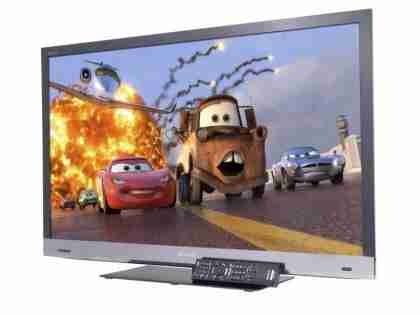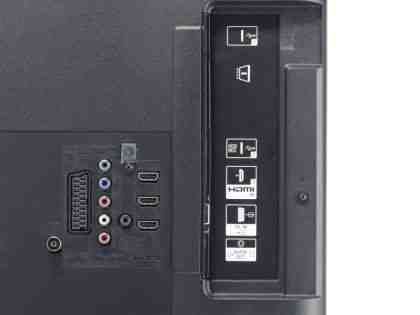For this review we tested the 40in model in the HX723 range. It's also listed in a 46in screen size (KDL-46HX723) on Sony's website, but wer can't find the larger version for sale at present. That model has identical specifications except for its dimensions and power usage. We're confident that image quality will be practically identical across the range.
With a 40in diagonal screen, Sony’s KDL-40HX723 might not be the largest TV you can buy for £900, but it’s certainly one of the best equipped – 400Hz response times, 3D support, internet TV functions and an incredibly thin chassis that makes it ideal for wall-mounting could make it the ideal high-end set for those with a smaller living room.

The screen bezel isn’t particularly thin, but the combination of black and brushed metal materials still looks fantastic. A minimal selection of buttons is hidden at the side of the TV, but you shouldn’t need to use them as long as you keep the comprehensive and sensibly laid-out remote control close by.
Around the back of the set, four HDMI ports are joined by VGA, component and SCART video, digital optical and 3.5mm analogue audio inputs, Ethernet, a Common Interface slot and two USB ports. There’s no inbuilt Wi-Fi, so you’ll need to buy a wireless dongle separately if you want to connect the set to your network. With DLNA media streaming and plenty of internet TV services, there’s good reason to – as well as watching catch-up TV from the BBC and Channel Five, you can update your social networks, check the news and weather or play files from a PC or NAS. With the exception of DivX and XviD files, we could play all our test footage flawlessly. Sony’s fantastic PS3-style XMB interface makes another appearance here, and navigating between each service incredibly straightforward.

If you have a spare USB stick or external hard disk, you can also use the second USB port as a rudimentary DVR. Timer and series recordings can be set through the on-screen programme guide, although you can only watch the channel you’re recording as the HX723 only has one TV tuner. The other downsides are that USB flash drives must be formatted before use, and you can’t back up your recordings to a PC once you’ve run out of space on your disk.
Standard-definition footage from the built-in Freeview HD tuner looked reasonable, with only a few noise artefacts and plenty of detail. However, high definition footage is where the HX723 excels – images looked incredibly sharp and bright, with very accurate colour reproduction and superb viewing angles. Fast-moving scenes looked incredibly fluid thanks to Sony’s 400Hz MotionFlow frame interpolation system, which smoothed motion without creating artefacts.
